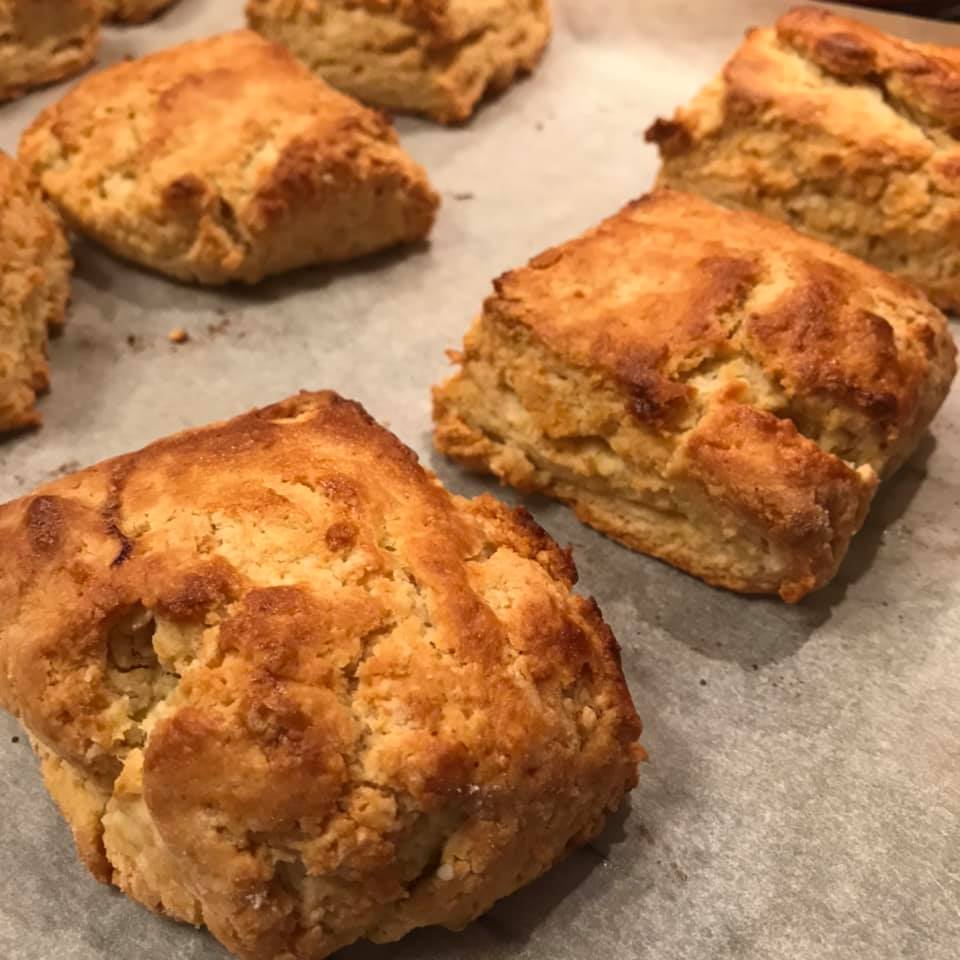Xanthan Gum
What is it and why you need it
Â
When you are on a gluten free diet and start baking and cooking with gluten free ingredients, some of them seem a little strange. That is definitely true with xanthan gum. I have a lot of people at my cooking classes ask me what is it and what does it do. Why do I need to use it and can I use guar gum instead?
Xanthan gum is derived from corn sugar. It comes in oz packages and is a very fine powder. It has no taste or odor of its own and blends in with the dry ingredients of your recipe.
Since we cook without wheat, gluten free baked goods lack the gluten structure found in wheat based goodies. Gluten is what makes regular wheat bread spongy and elastic. It gives bread its stretch, such as with pizza dough. You can twirl it up in the air making it thinner and thinner without tearing it.
Using wheat is not an option for us so our baked goods lack the ability to stretch and become elastic. They have a tendency to be dry and crumbly, often falling apart in your hands.
I tried making pizelles ( an Italian cookie similar to a thin ice cream cone) without adding xanthan gum to the batter. When I placed the batter in the iron and pressed down the lid, the batter blew out the sides and scattered every where on the counter.
That is why you need to use xanthan gum. It is a very sticky substance that binds to your gluten free flours and makes them stick together instead of flying apart. It gives your baked goods structure and forms a sticky, spongy batter so your cookies or muffins will hold together and take shape.
This baking necessity can be a bit pricey. But you only need a teaspoon at a time for your recipes. It is very shelf stable and will last in your pantry for months. I have had some for 8 months and it functioned just fine.
When you buy your xanthan gum, place it into a small lidded container that you can store in your kitchen cupboard. It is a lot easier to measure out of a container than the plastic bag it is sold in.
Remember that I said it was a very sticky substance. It really is! If you get it on your hands, wash it off immediately. If you don’t, it will be as hard to get off as super glue. This stuff has some great sticking power!
What is the difference between guar gum and xanthan gum? Â
Guar gum is ground from guar seeds. It has a lot of fiber to it and can cause people who eat a lot of it problems. It has been know to behave like a laxative.
Guar gum is much cheaper than xanthan gum and can be used in recipes calling for xanthan gum. If you decide to use it, replace the xanthan gum called for with about half as much guar gum. So, if your recipe says 1 teaspoon of xanthan gum then add only 1/2 teaspoon of guar gum.
I prefer to use xanthan gum myself. But you may find that you like guar gum instead. Experiment with both. That way you can judge for yourself which one works best for you.
Here is a handy chart for you to use to convert your own recipes with. Print this out and tape it to the inside of your kitchen cabinet so you can refer to it when you need it.
This chart is based on how much flour your recipe calls for and what kind of recipe it is. Not all baked goods need the same amount of xanthan gum.
If you use too much you will know right away! It will feel and act like a rubber band. I bought a package of gluten free brownie mix to try. There was way too much in the mix. I couldn’t get it to spread in the pan. it kept bouncing back like regular pizza dough! Not very appetizing! Moral of the story: Follow the Chart!
-
Cookies: Use 1/4 tsp per cup of flour
-
Cakes: Use 1/2 tsp per cup of flour
-
Muffins and Quick Breads: Use 3/4 tsp per cup of flour
-
Yeast Breads: Use 1 to 1 1/2 tsp per cup of flour
-
Pizza Crusts: Use 2 tsp per cup of flour
Have fun, be adventuresome, get flour everywhere!:)
Kathy
ps… if this has been helpful for you, pass it on! Sharing is caring! Let’s help each other have more Fun!






Leave A Response